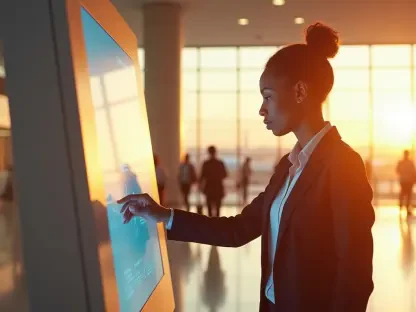The COVID-19 pandemic undoubtedly changed the way people in the US and abroad live, work, and shop. While lockdowns and several other social distancing measures became an important part of the fight against the virus and the disease it spreads, e-commerce grew and retail store sales fell rapidly. According to Deloitte’s research, a similar pattern is to be expected in 2022—although this is likely to include new trends that will emerge as consequences of a pandemic-driven global recession. Not all experts remain convinced that brick-and-mortar retail will continue its decline. In fact, some retailers plan to open as many as 30 stores a year in the future.
Even though the retail market is expected to undergo numerous changes in the near future, the new Deloitte study points out that some principles are likely to govern the industry for a time. Retailers that were facing problems even before the healthcare crisis will probably see their pace of decline accelerate. Inflation and other financial issues could drive customers toward off-brand and discount retailers, while e-commerce will likely continue to grow. Even more important, however, may be the fact that other new trends seem to be disrupting retail in our post-COVID-19 lives.
These new trends are likely to influence the retail market in the near future, as they will become decisive factors for success.
Important Trends Reshaping Retail Today
According to Deloitte, one of the most important things to consider is the fact that the product mix is expected to change, and this means that retailers could decide to develop new, mutually beneficial partnerships to further increase their business. With inflation and other financial issues influencing what brands and products customers choose, and supply chain problems still wreaking havoc, investing in new partnerships could prove to be a crucial decision. Furthermore, retailers are likely to depend more and more on the trust they share with their consumers, but also with their other stakeholders.
Moreover, according to Deloitte experts, customers have come to favor convenience, and this could boost both contactless payments and online sales in general. Coresight Research indicates that traditional retail seems to be thriving in 2022, as the number of new store openings was two times higher than that of store closures during the first seven months of this year. In fact, US brick-and-mortar retail expanded to include 4,432 store openings compared to 1,954 closures. The good news is that retailers are not going to stop here, and more and more stores are expected to open in the final months of 2022.
Retailers like Uniqlo have made a point of investing in several physical stores in the US, even though surging inflation continues to disrupt the American market.
Why Physical Retail Could See a Comeback
According to Reuters, while some important retailers like Gap and Kohl’s are becoming increasingly worried about their shrinking profit margins, Fast Retailing—a company that owns 59 Uniqlo stores in North America—seems to have found success. Although inflation is thought to cause delays in purchasing, including clothing, Fast Retailing recently announced it will book its first annual profit in North America. It may have taken Uniqlo less than 17 years to achieve success in the US and Canada, but its strategy of changing logistics and improving pricing approaches during the pandemic proved successful.
Companies like Fast Retailing and its major brand, Uniqlo, proves the importance of adapting to new circumstances. The company now plans to open 30 new units per year until it reaches 200 stores in the region. Fast Retailing will venture to important cities such as New York and San Francisco, and also plans to attract new customers in more spread-out areas, like Texas and Florida. According to its representatives, Japan’s Uniqlo hopes to reap 300 billion yen in annual sales in the US by 2027. Moreover, it also wants to increase its operating profit margins from 5% to 20%.
Uniqlo’s apparent success in 2022 shows that a good strategy can ultimately guarantee good results—even during global crises. Their success also provides some hope that brick-and-mortar retail could make a comeback soon.









